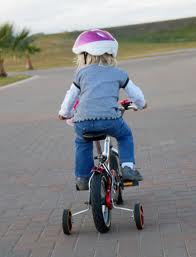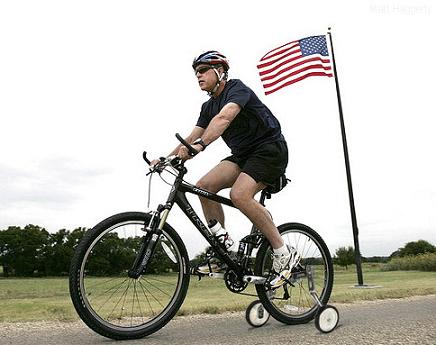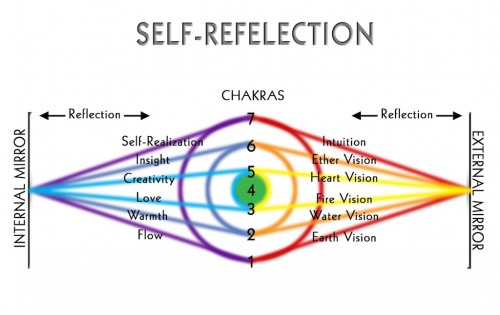Riding the Bike of Emotion…
Good Tuesday to You!
I hope this message finds you well.
I had a busy day of writing, coaching, and producing video for www.chekconnect.com yesterday.
My monthly message is FREE on the site and this month it is about how to find your Dream when you are having a hard time finding your dream.
For those of you that are interested, you can subscribe to my monthly Q&A with Paul video series where I answer people’s questions from around the world on a wide variety of topics.
This is a great opportunity to learn simple, natural methods for aiding the healing process from much of what ails people and is particularly useful to those in the health care and exercise professions.
I got in the gym yesterday for quick workout coupling lunging, squatting and multidirectional cable twists, which felt great.
It is always nice to see the CHEK students learning. Yesterday, they had Master Chris Maund teaching them (Janet Alexander’s husband).
He’s a taskmaster and if you are in his class, you are sure to learn!
We will announce the winner and runners up for the PPS Success Mastery Dream Big Contest in the next couple of days.
So keep your eyes open to meet some amazing PPS Success Mastery Program winners!
Riding the Bike of Emotion!

We all have to experience our emotions day in and day out, moment to moment.
Our emotions are the product of energy flow within our body-mind. Emotions inform us of the feelings we have with regard to:
1. Our inner perception of the outer environment, and
2. Our inner perceptions of our inner environment.
Emotion essentially means, energy~moving.
Speaking on a grand scale, emotion is the product of love – Love being the energetic flow of desire being willed and will being perceived.
All things and energies in the universe are a result of yin becoming yang and yang becoming yin in every sense of the words; the sun is hot, but will become cold; space is cold, but suns warms it!

When we are infants, children and adolescents, we are under constant influence from parents, siblings, family, and our social circles.
In that milieu, we learn to express and feel our emotions. How we experience our emotions and interpret them is most commonly a reflection of how our parents teach us to create, express, experience and respond to emotional stimuli.
Through our emotions, our mental activity is emotionalized. This allows us to feel our thoughts.
The “feelings” we attach to our “thoughts” is also greatly influenced by our programming in our early years.
Our programming, for example, teaches us what to love, to fear, and how we may respond to either stimulus.
Children are generally supported by their parents such that they can safely and effectively express their emotions, giving them an opportunity to connect meaning with feeling.
As parents, we do our best to guide our children and act like training wheels for them.
Unfortunately, many children are simply tossed on their emotion-bike and sent down rocky mountain trails without an effective training period, nor training wheels!
This kind of experience floods the child with affect, while often detaching their feelings from any logic or understanding of such events.
This often triggers painful and scary associations with all perceived in the environment at the time.
The result can be that such people have emotional upheavals or outbursts for what seem unlikely or illogical reasons relative to those of us that were raised with appropriate use of training wheels before being tossed to the mountain trails.

I had to laugh when I found this image of George Bush riding a bike with training wheels!
At some point in our lives, most of us realize that our emotions, though important and necessary, are commandeering our minds.
We often have the experience of making snap decisions our of emotional turbulence that we regret later on, often damaging potentially good relationships.
Initially, most of us deny what we are experiencing as potentially of our own creation.
After enough setbacks though, those that have higher aspirations than constantly being in a state of turbulence and relationship dissonance begin seeking ways to balance themselves. T
his is the desire for training wheels on our mental~emotional bike.
I’m still riding my mental~emotional bike with training wheels of my own making.
My upbringing was tumultuous, to say the least. I still have to witness and actively seek to manage the emotional flow that moves through me and often realize I’m reacting to triggers developed from the period of my developmental relationships.
Sometimes, it’s quite tough because some of us find ways to become special, or celebrated in some way because of our emotional surges.
For example, such emotional surges, turned into athletic fervor; when I played football, boxed, and kick boxed, I could turn my rage into a force of impact and was often celebrated for that!
When an emotional child or youth gets celebrated for such explosive self-expression, it often sets the tone for how they are likely to express themselves outside the athletic arena!and non-competitors often don’t appreciate the battering.
This can be very confusing for those that go from being celebrated in one instance to being chastised in another.
TIPS FOR EMOTIONAL SELF-MANAGEMENT
Being rather simple-minded, I often come up with simple ways or concepts I can use and test on myself before teaching them to others.
One of my simple methods is riding the bike of emotions. Riding this bike isn’t quite as easy as the physical bicycle!
When I was a junior motto-cross racer, my first coach told me, “Paul, if you race a motorcycle, you are going to fall off, but the secret to success is to get right back up, dust yourself off, and get back on before you let fear take hold of you!”
I’ve always remembered that and have had to remind myself of that truth many times in challenging relationship experiences, which seem to forever come and go like the tide.
My simple emotional bike technique is based on the yin~yang of energy flow.
Yin being a “cooling, centering force” and yang being a “warming, expanding force” can be transferred to the bike.
Where there is too much desire or holding (in), or being overly logical, the bike is leaning left.
Where there is too much fire, outward expression, will, or excessive creativity without conclusion, the bike is leaning right.
If, for example, someone is shouting at me and I can see their fire blazing, that would be hot-yang expression.
Knowing that water controls fire, I have to lean my bike left to counterbalance their excessive right leaning force.
Think of two people riding a bike together; if one leans too far to the right while rounding a right hand turn, the other must counter-lean to the left of both will crash!
If someone is too stuffed up with emotion and can’t express themselves, or just can’t get moving, take affirmative action (excess yin), then I must generate the warmth to facilitate movement.
This must be done in a loving manner or it will backfire!
As a male, my natural drive is to try and help by “fixing”, which is next to useless when relating to most women!
I’m constantly working on the transition between perceiving a woman from my male perspective to allowing myself to feel and understand their experience.
Men are often perplexed by women who rant on and on, but seem uninterested in correcting what’s bugging them!
Thus, the bike trail comes complete with all the obstacles of a mountain bike trail, yet this trail talks, acts, and reacts, making it much more challenging than even a tough mountain bike trail.
In simplistic form, where there is too much female energy, seek to balance with male warmth and rationality.
Where there is too much male energy, seek to balance with female feeling, acceptance and nurture.
All conscious perception may be seen as self-perception.
Regardless of what is occurring “outside you”, your perception of any given event is uniquely your own and will reflect your own programming and life experiences.
Once one realizes that trying to change the world without first changing themselves is futile, they are in place to begin the inner-practice of emotional self-management.
 I created this chart to remind me and my students of how to use the mirror-of-self as a guide for their internalization of external events and vice versa.
I created this chart to remind me and my students of how to use the mirror-of-self as a guide for their internalization of external events and vice versa.
The circles with the green in the middle represent the human ‘I’ (or ego), which is an agent of integration.
The qualities on the right represent the base energies that flow through the respective chakras and the qualities on the left represent the types of energy or energy qualities we can consciously use to enhance, adjust, or better understand within ourselves what we are experiencing from the outside (external mirror).
Using myself as an example, I’m not only born on the cusp of Leo and Virgo making me very sun-like and analytical, I’m full of fire by nature of my personality or disposition.
When my emotional bike is leaning toward being too fire-like in relationship to self or other, I can:
1. Adjust my flow.
2. Cool what is hot to warm the situation.
3. Be brave enough to perceive the situation from my heart-mind; empathy and compassion are very high forms of love.
4. I can choose to see the challenge as an opportunity to be more creative and go outside my own box.
Einstein said, “you can’t solve a problem with the same thinking that created it”.
5. I can seek to gain insight as to the source of my own emotions over a specific experience I’m having, or I can ask better questions to gain insight into the nature of others feelings or experience.
6. I can choose to stay present with a challenging situation out of my own philosophical understanding that we are all expressions of THE ONE, the source of life itself.
I remind myself that the Law of Attraction says, like attracts like and opposites attract.
Therefore, I’m either experiencing someone that is so like me that I must see the opportunity to better see my own shadow, or I’m experiencing someone so opposite to me that I can learn to appreciate their viewpoint.
Any and all of the approaches here are steps on the path to Self-Realization.
CONCLUSION
The path to emotional~mental self-management may be the most challenging path you will ever experience.
There is no need to hold off on the experiences on this path, for if you are reading this blog post, you are already on the path!
This path is the path of life. To deny the path is to deny your individual responsibility as a co-creator in relationship to self and other in every regard.
To deny that you can learn and grow in any situation is to ensure that the ego-shadow will stay strong and live in a perpetual state of ignorance; and this form of ignorance is never bliss!
Many stuck in this form of ignorance seek to use medical and recreational drugs to create the impression of joy, peace, stability, etc!, but that is only yet another act of co-dependence.
I’m right here riding the bike of emotional~mental self-management with you every day.
I’m learning as much today as I ever did, and the lessons often seem to come at the worst possible times (there’s that path again!).
But that is how we build character, empathy, compassion, and gain the experience to truly become wise people.
Right now, the world needs a LOT of wise people so lets get on the bike together and start practicing!
Love and chi,
Paul Chek